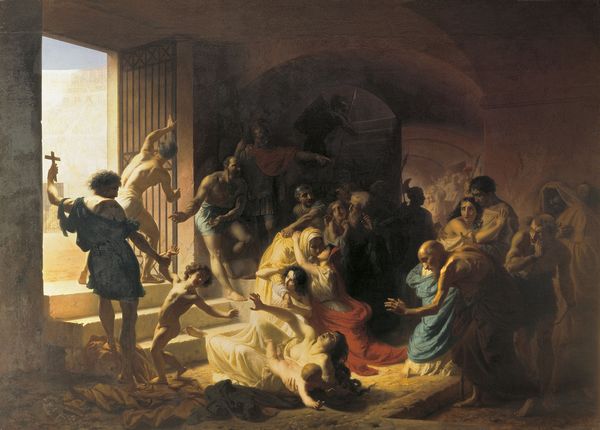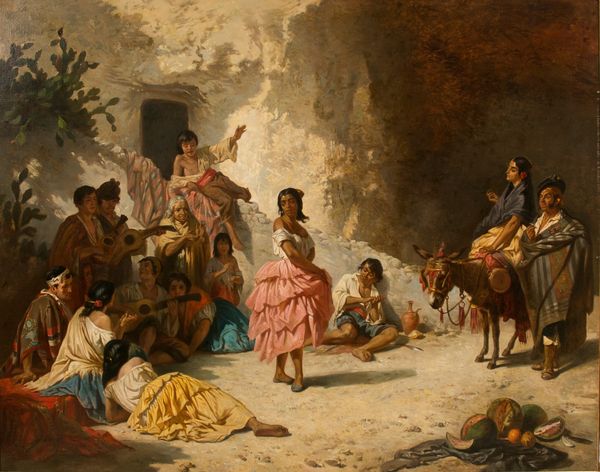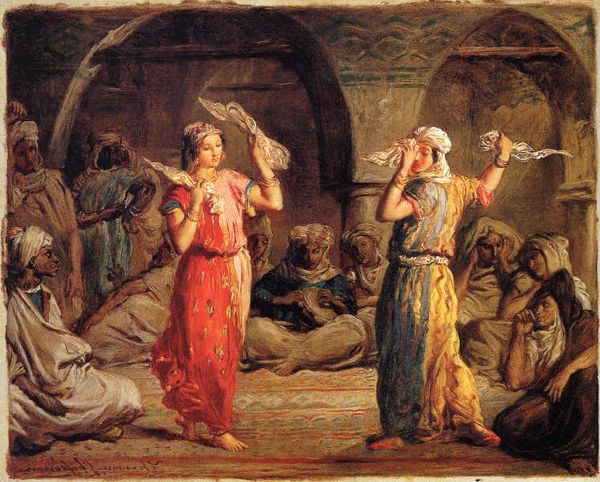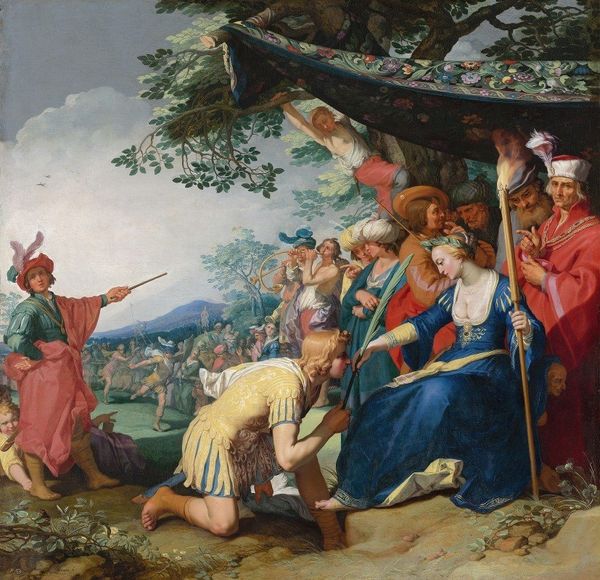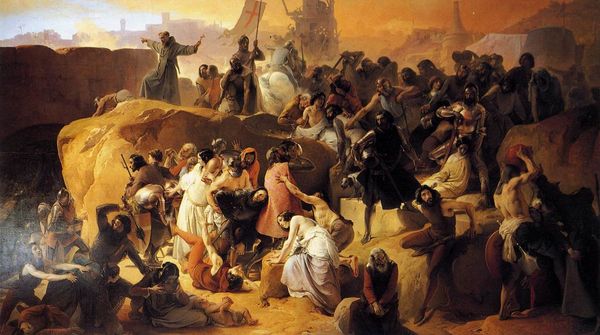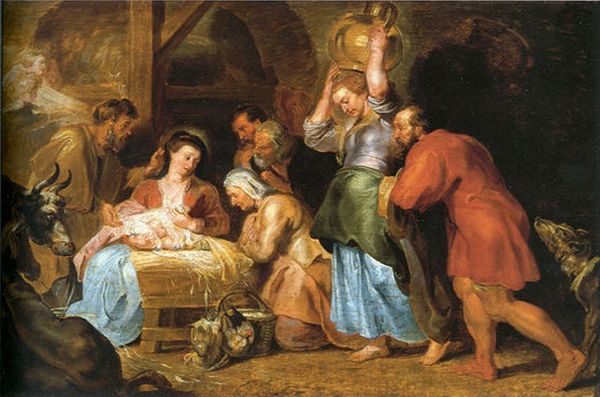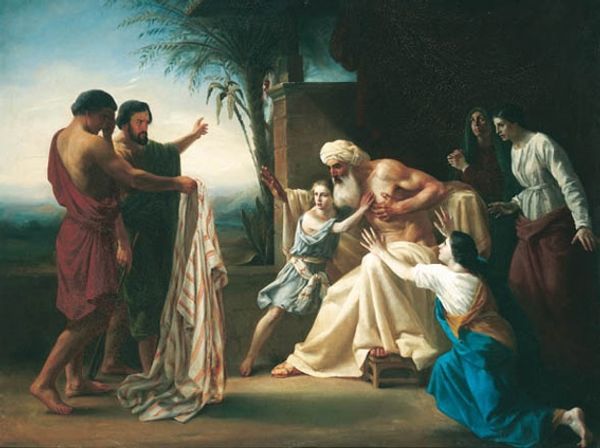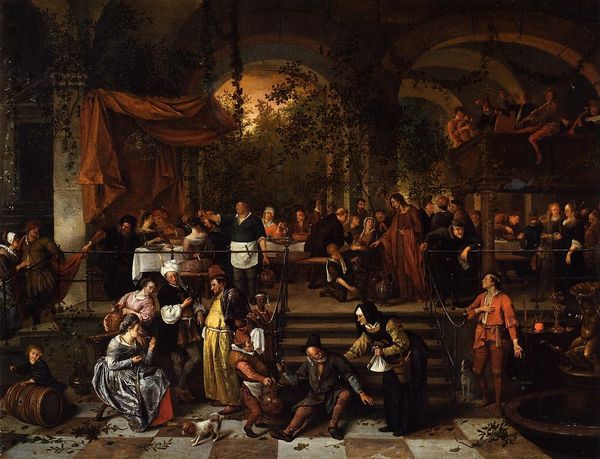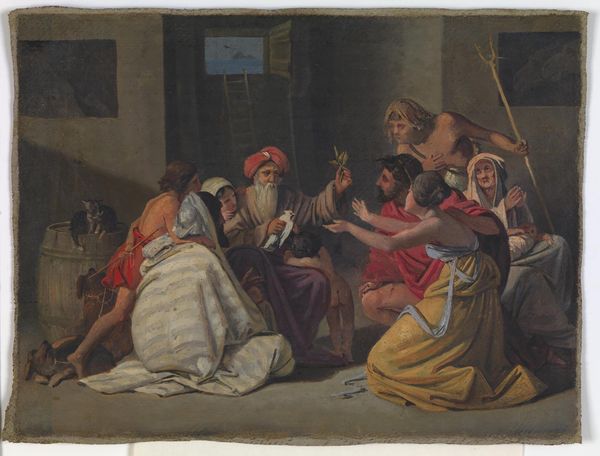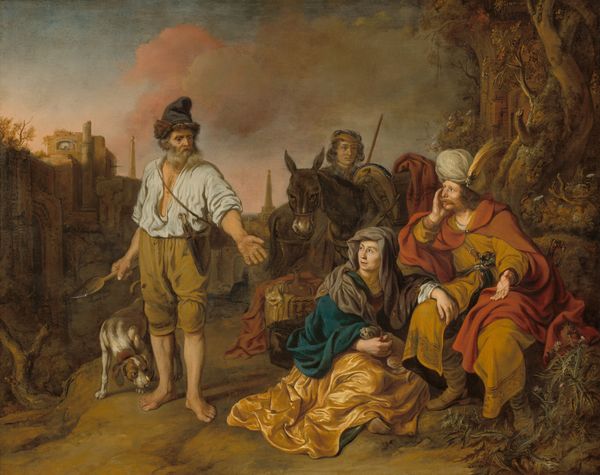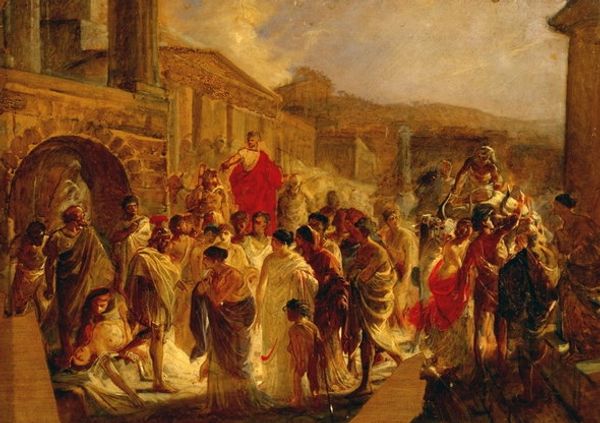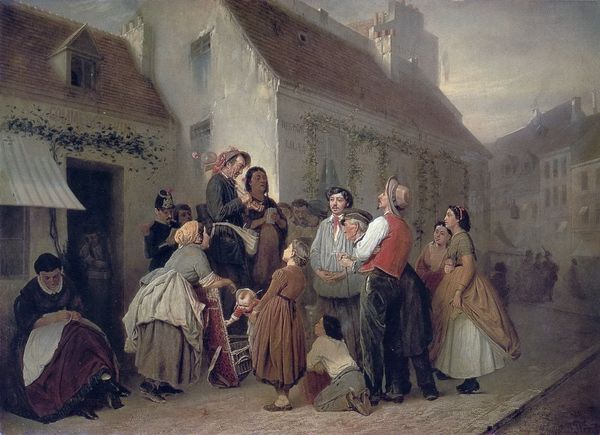
Copyright: Public domain
Manuel Rodriguez de Guzman painted this image, Rinconcete y Cortadillo, presumably in Spain, sometime in the mid-19th century. It draws its subject from Miguel de Cervantes's novel of the same name. The painting depicts a scene of revelry and performance. A woman dances while a Black man plays music, and various characters look on, some in postures of intense emotion. This is the world of the "court of miracles", the den of thieves and prostitutes presided over by the character Monipodio, as Cervantes imagined it. But while Cervantes used this world to satirize the corruption of Spanish society, Rodriguez de Guzman's painting seems to romanticize it, suggesting a nostalgia for a world of transgression. As art historians, we might look at the traditions of costumbrismo, a movement in 19th-century Spanish art and literature that focused on depicting everyday life and customs. We might also consider the history of Orientalism, the Western fascination with the "exotic" cultures of the East and the ways in which this fascination shaped the representation of non-European peoples. These can all help us understand the social forces that shaped Rodriguez de Guzman's painting.
Comments
No comments
Be the first to comment and join the conversation on the ultimate creative platform.
